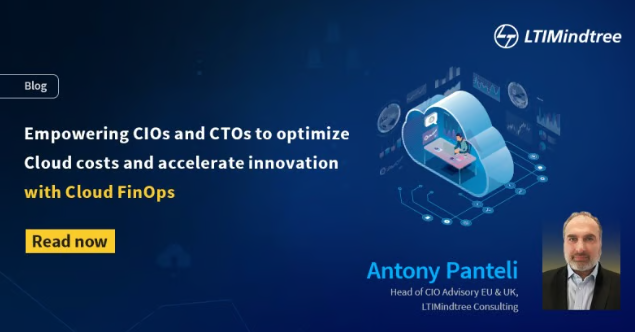In today's fast-paced digital landscape, cloud computing has revolutionized how businesses drive agility, flexibility, and innovation. The advent of the pay-as-you-go model offered by cloud providers has opened new avenues for optimizing costs and resources. However, managing cloud expenses efficiently while ensuring financial accountability poses significant challenges. This is where Cloud FinOps emerges as a game-changer. Let's delve into the world of Cloud FinOps and explore its transformative impact on optimizing cloud costs for CIOs and CTOs.
What is Cloud FinOps?
The foundational principles, practices, and tools of Cloud FinOps empower organizations to streamline cloud costs and foster financial discipline. Unlike traditional cloud economics, FinOps goes beyond financial considerations to instill a culture of collaboration between engineering and business teams. FinOps drives informed cloud spending decisions that maximize business value by leveraging data insights and best practices.
The Phases of Cloud FinOps
- The Inform Phase: Gaining visibility into cloud costs and receiving optimization recommendations sets the stage for cost-efficient resource utilization.
- The Optimize Phase: Implementing optimization strategies to enhance resource usage efficiency and minimize wastage.
- The Operate Phase: Standardizing cloud services, governance processes, and accurate data reporting facilitates improved negotiation with cloud providers for better rates and service levels.
Benefits of Cloud FinOps
- Cost Optimization: Analyzing usage data to align resources with demand, reducing unnecessary cloud expenses.
- Enhanced Visibility: Providing a comprehensive view of cloud costs to drive informed decision-making.
- Financial Accountability: Cultivating cross-functional collaboration for transparent cloud spending responsibilities.
- Improved Forecasting: Accurate prediction of future expenditures for better budgeting and planning.
- Increased Innovation: Allocating resources to innovation projects, accelerating digital transformation.
Implementing Cloud FinOps
Achieving successful Cloud FinOps implementation requires a holistic approach that involves organizational culture, processes, and tools. With support from various business units and executive leadership, organizations can leverage Cloud FinOps to identify optimization opportunities and enhance cost accuracy.
Challenges and Best Practices
Addressing key challenges such as data accuracy, change management, and balancing cost versus performance is paramount for effective Cloud FinOps adoption. By embracing automation, effective communication, and regular performance metric reviews, CIOs and CTOs can navigate these challenges and drive innovation in the digital realm.
Conclusion
Elevate your organization's cloud cost optimization strategy with Cloud FinOps. By embracing this transformative framework, CIOs and CTOs can revolutionize cost management, foster financial accountability, and drive innovation in a competitive digital landscape. Take the first step towards cloud cost optimization today!
See Also: LTIMindtree Earns Distinction as GSI Partner of the Year 2022

